Townsend Courtney M.Jr., Evers B. Mark. Atlas of General Surgical Techniques: Expert Consult
Подождите немного. Документ загружается.

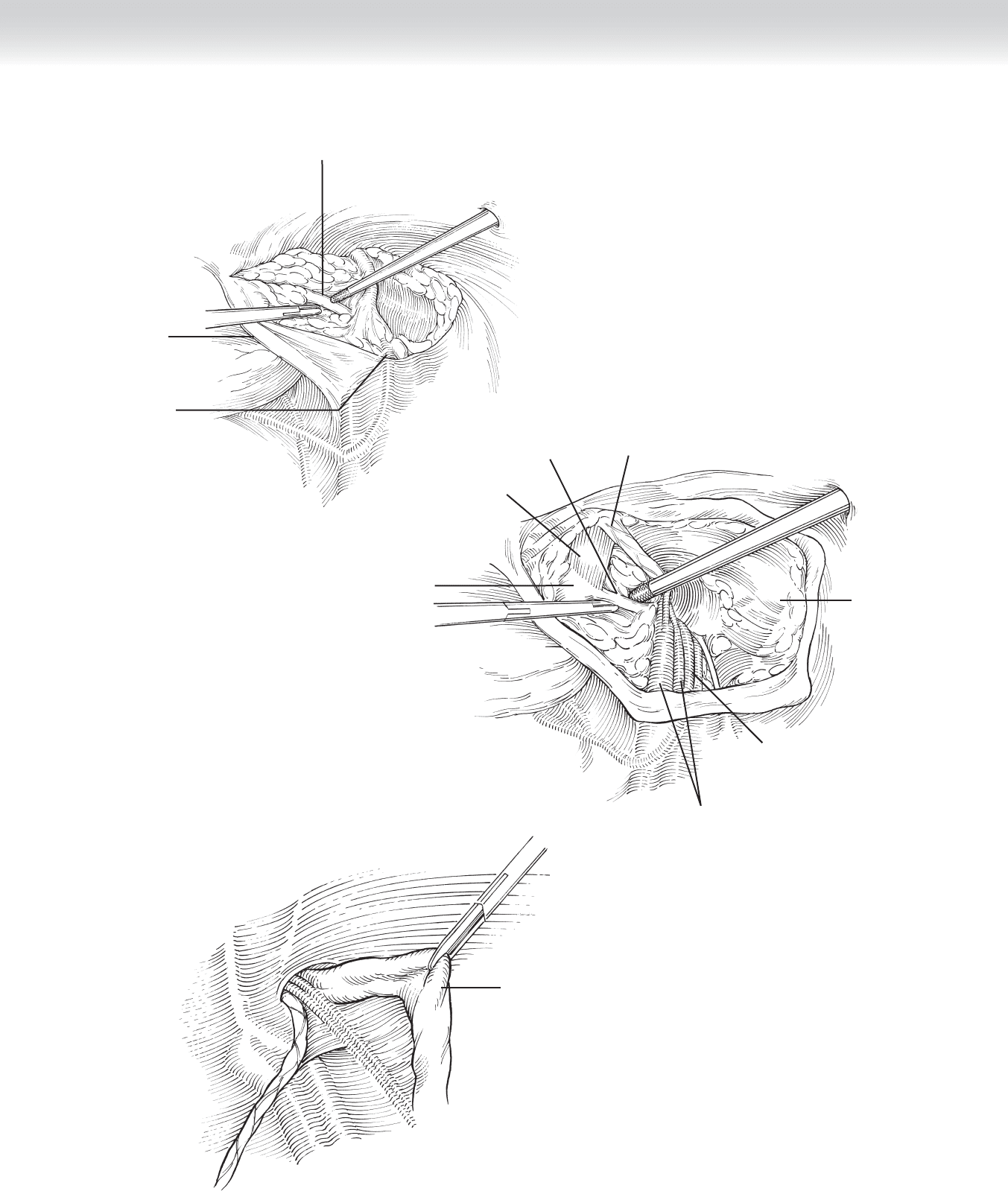
CHAPTER 78 • Laparoscopic Inguinal Hernia Repair 849
Dissection through
deep fat to Cooper's ligament
Medial
umbilical
fold
Vas deferens
A
B
Inferior epigastric
vessels
Cooper's ligament
Rectus
abdominis muscle
Pubis
Iliac
vessels
Vas deferens
Peritoneum
Sac dissected
from cord
C
FIGURE 78 –4
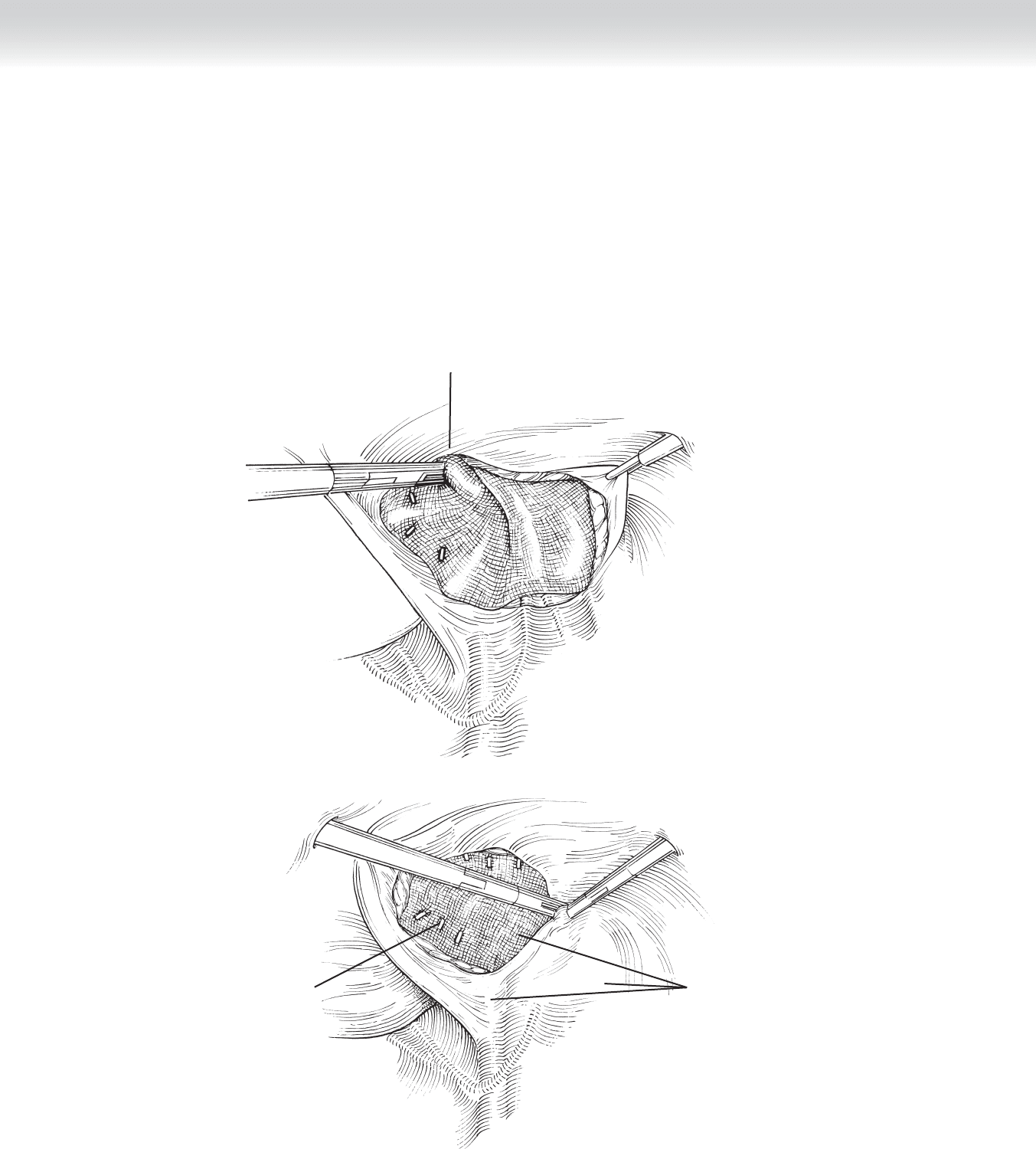
850 Section XI • Hernias
◆ A sheet of polypropylene or polyester mesh is trimmed to shape, tightly rolled, inserted
through the scope port, and spread out on the deperitonealized surface.
◆ The mesh should be anchored at the pubic bone, for a short distance along Cooper’s
ligament, and along the anterior abdominal wall, taking care to avoid the important
neurovascular structures (Figure 78-5).
Edge of graft stapled to
transversalis fascia
Edge of peritoneum
dissected bluntly
for imbrication
A
B
Dangerous areas
for stapling
Staples in graft
and Cooper's ligament
FIGURE 78 –5
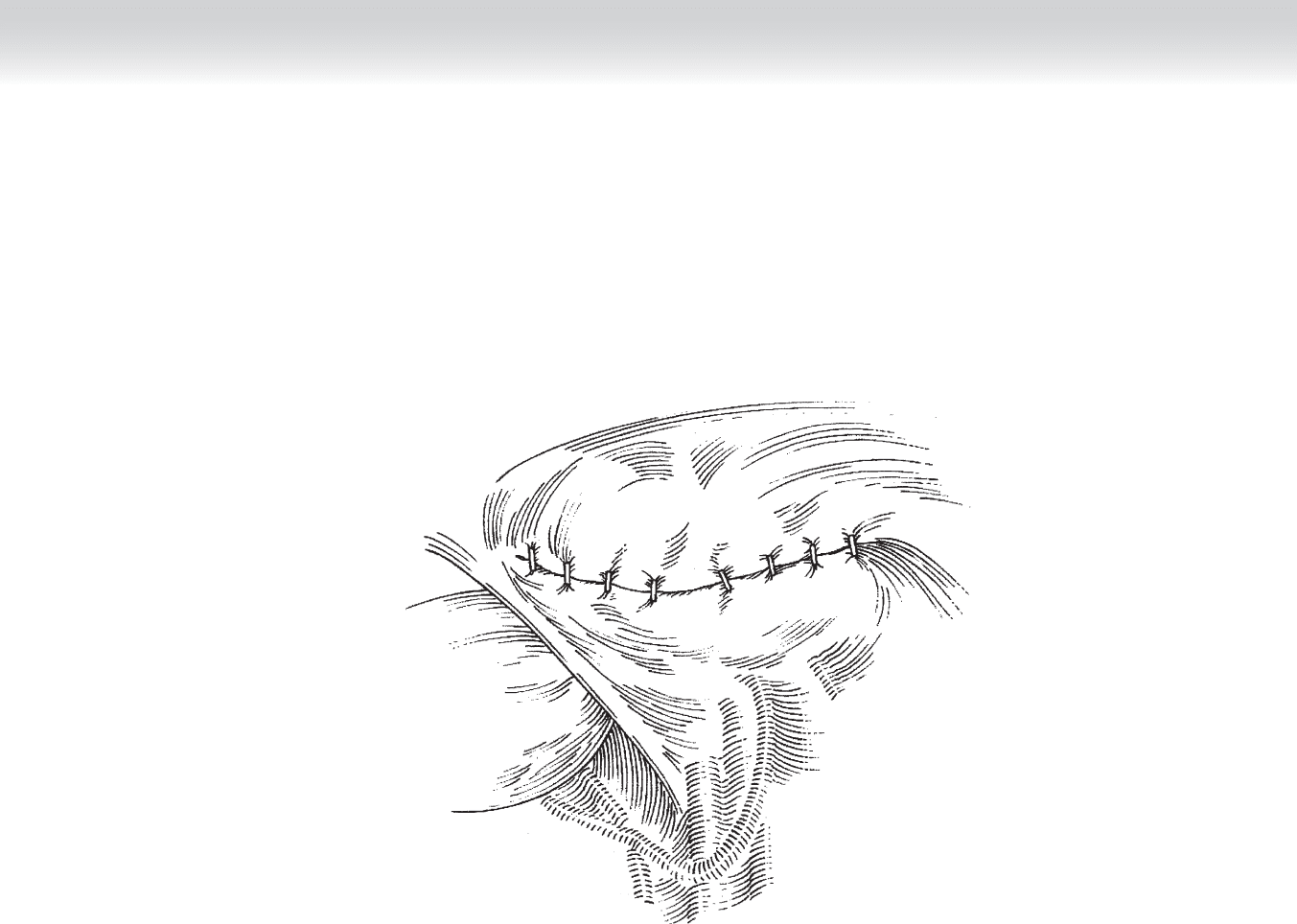
CHAPTER 78 • Laparoscopic Inguinal Hernia Repair 851
◆ The peritoneal fl ap is used to cover the mesh. The incision in the peritoneum is closed
with clips or tacks (Figure 78-6).
FIGURE 78 –6

852 Section XI • Hernias
◆ Totally extraperitoneal (TEP) repair
◆ The 10-mm port is fi rst placed using an open approach. A small incision is made along
the inferior edge of the umbilicus. The anterior rectus sheath is exposed and incised on
either side of the midline. The rectus muscle is retracted laterally from the midline to
expose the posterior rectus sheath.
◆ The preperitoneal plane (between the rectus muscle and posterior rectus sheath) is
bluntly dissected manually or, preferably, with a balloon dissector. This plane is devel-
oped down to the pubic bone (Figure 78-7).
Endoscope with balloon
in preperitoneal space
A
Peritoneum
Bladder
Pubis
B
Pubis
Endoscope with balloon
advanced inferiorly in
preperitoneal space
Peritoneum
Bladder
FIGURE 78 –7
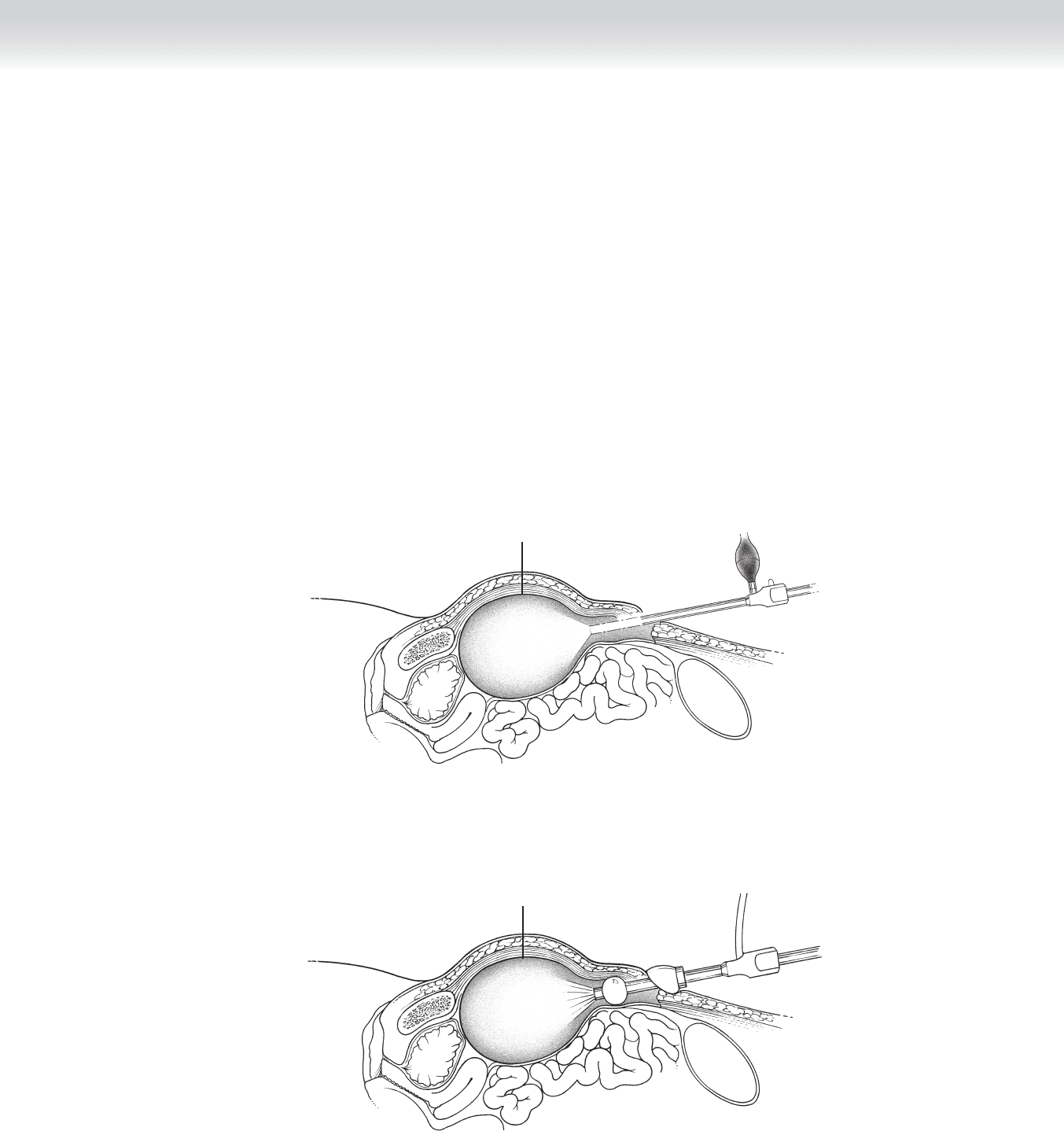
CHAPTER 78 • Laparoscopic Inguinal Hernia Repair 853
◆ The balloon dissector is infl ated fully while the laparoscope is positioned to view internally.
An interior view of the structures of the spermatic cord is usually observed at this point. A
small indirect hernia sac may be reduced by infl ation of the balloon (Figure 78-8).
◆ The balloon is defl ated and the balloon dissecting port is replaced with a working 10-mm
port. CO
2
insuffl ation at 13 to 15 mm Hg is used to maintain the expansion of the pre-
peritoneal space. The seal of the port to the anterior fascia can be provided by cinching
the fascia with suture, placing a Hassan adapter, or using a balloon trocar (illustrated)
(Figure 78-9).
◆ The scope is inserted for placement of the two 5-mm ports and completion of the pre-
peritoneal dissection. This dissection can usually be done bluntly without the need for
the electrosurgical unit. However, care must be taken to avoid tearing the peritoneum,
because this will lead to infl ation of the peritoneal cavity and loss of adequate preperito-
neal visualization. The structures entering the internal ring should be dissected until they
are clearly seen (see Figure 78-1, B).
Balloon inflated in
preperitoneal space
FIGURE 78 –8
Expanded preperitoneal space
maintained with insufflation
FIGURE 78 –9
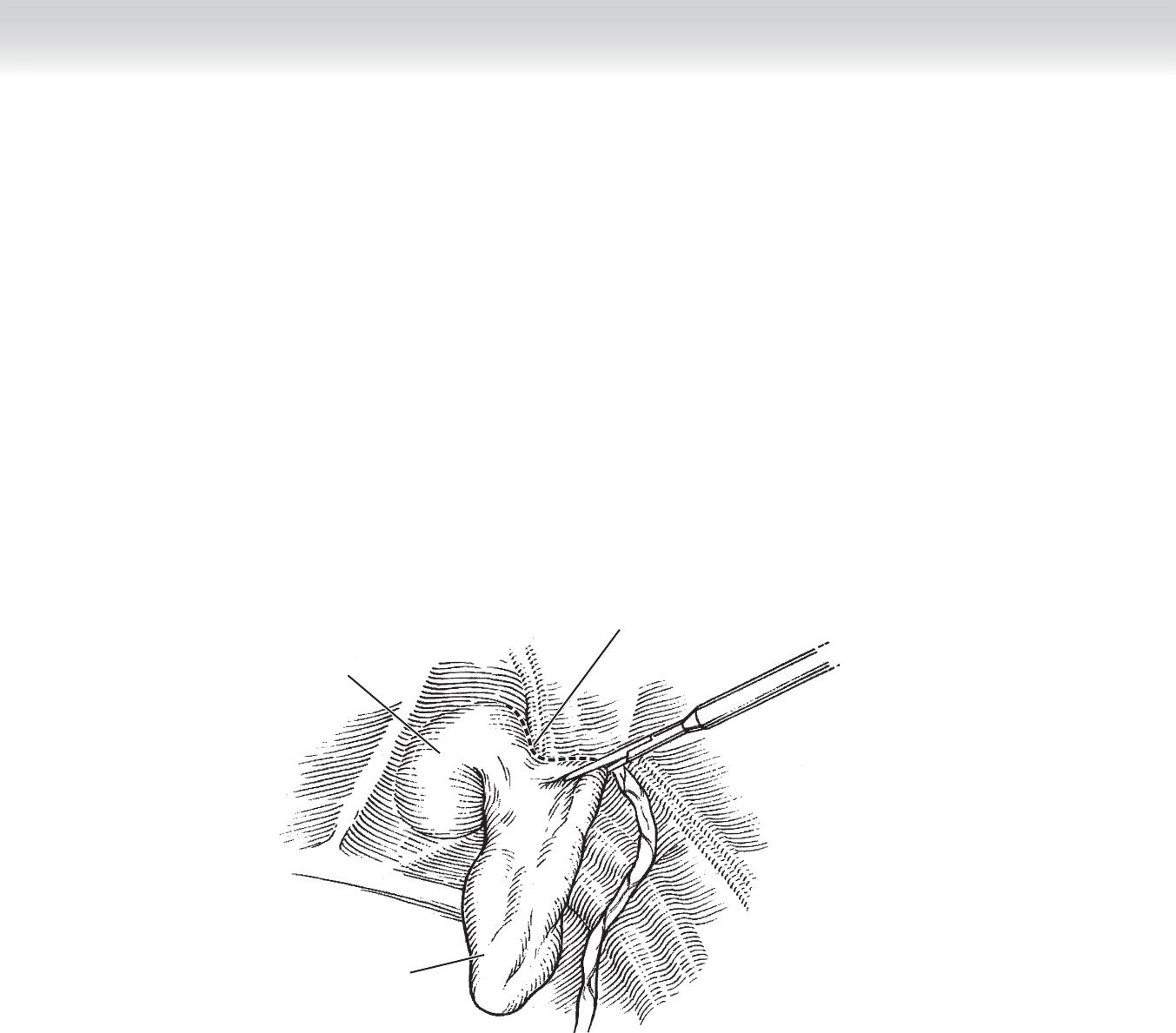
854 Section XI • Hernias
◆ The fatty contents of a direct hernia defect should be reduced and usually excised
(Figure 78-10).
◆ An indirect sac, if not reduced by the balloon infl ation, is gently grasped and pulled out
of the internal ring and carefully dissected it from the cord structures (Figure 78-11).
◆ The margins of dissection are the midline medially, the anterior superior iliac spine later-
ally, the transverse arch superiorly, and Cooper’s ligament inferiorly. The polypropylene or
polyester mesh is trimmed to shape, rolled tightly, inserted through the 10-mm port, and
laid in place to cover the femoral and both inguinal potential orifi ces. A notch cut for the
iliac vessels allows the mesh to lay with less buckling (Figure 78-12).
◆ The mesh can be anchored, if desired, to the pubis, Cooper’s ligament, and the abdomi-
nal wall above the transverse arch avoiding the sites of neurovascular structures (see
Figure 78-5).
◆ The insuffl ation is released (while the mesh is held in place if no anchoring is used), and
the ports are removed.
Direct hernia
Preperitoneal fat
Line of incision
FIGURE 78 –10
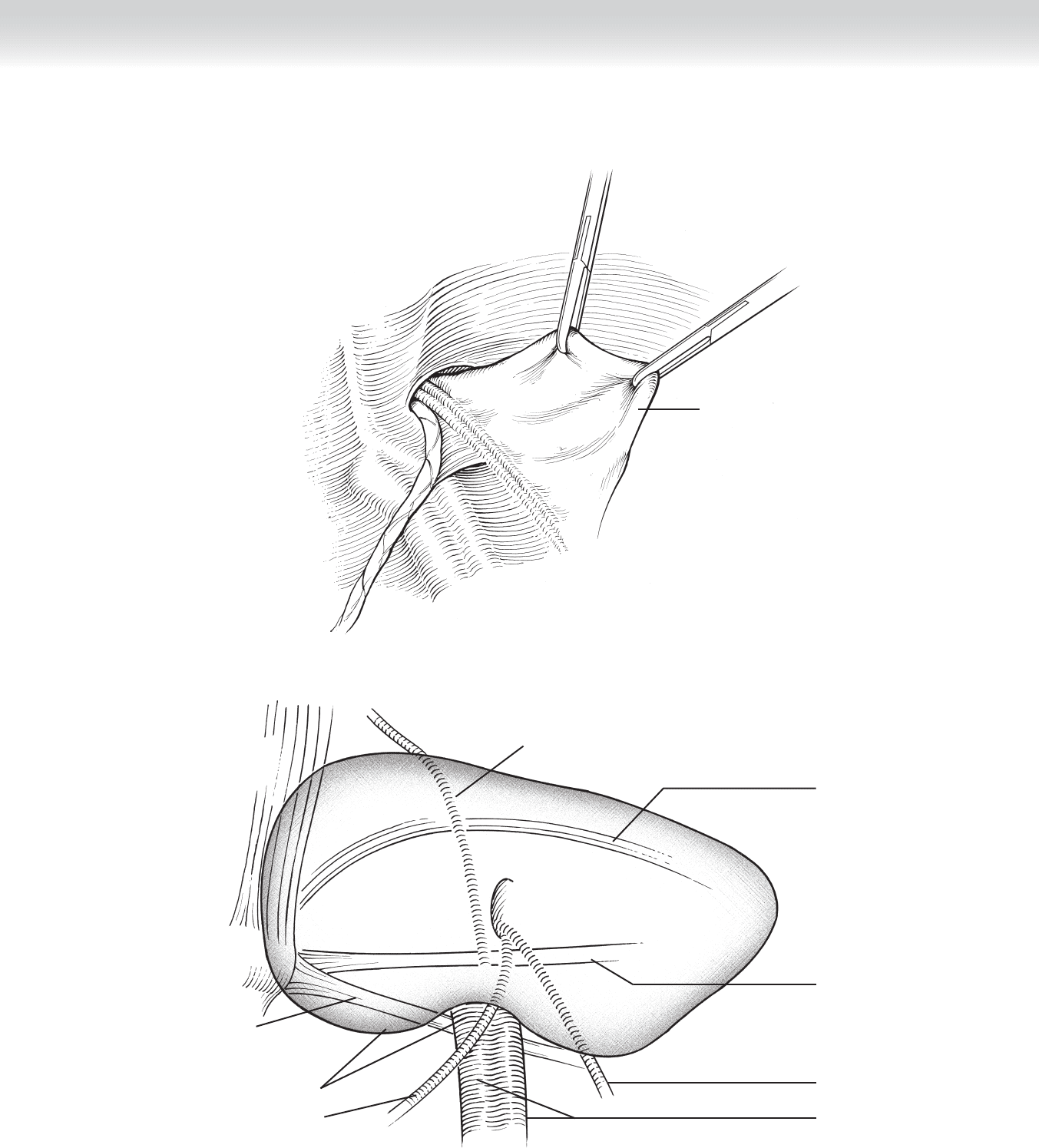
CHAPTER 78 • Laparoscopic Inguinal Hernia Repair 855
Sac dissected
from cord
FIGURE 78 –11
Inferior epigastric
vessels
Rectus abdominis
muscles
Cooper's
ligament
Vas deferens
Iliac vessels
Spermatic vessels
Iliopubic tract
Mesh rounded
to accommodate
iliac vessels
Closure of potential defects with mesh
Transverse arch
FIGURE 78 –12

856 Section XI • Hernias
3. CLOSURE
◆ The anterior fascia is closed with absorbable suture. The skin incisions are closed with
absorbable suture with a subcuticular technique.
◆ The incisions are dressed with tissue adhesive or tapes.
STEP 4: POSTOPERATIVE CARE
◆ These operations are usually performed in the outpatient setting.
◆ An oral narcotic such as hydrocodone is appropriate for pain management.
◆ Patients may return to regular activity as the surgical discomfort resolves.
STEP 5: PEARLS AND PITFALLS
◆ One must avoid fi xation clips and tacks in the lower outer quadrant of the mesh. This is
where the nerves and large vessels travel.
◆ If the peritoneal membrane is entered during a TEP, infl ation of the preperitoneal space can
be maintained by placing a Veress needle into the peritoneal cavity in the upper abdomen.
Alternatively, the TEP procedure can be converted to a TAPP procedure.
◆ The inferior edge of the mesh should be tucked under the peritoneum as the pneumoperi-
toneum is released to avoid migration of the mesh.
SELECTED REFERENCES
1. McKernan JB, Laws HL: Laparoscopic repair of inguinal hernias using a totally extraperitoneal prosthetic
approach. Surg Endosc 1993;7:26-28.
2. Stoppa RE, Warlaumont CR: The preperitoneal approach and prosthetic repair of groin hernia. In
Nyhus LM, Condon RE (eds): Hernia, 3rd ed. Philadelphia, Lippincott, 1989, pp 199-225.
3. Liem MS, van Vroonhoven TJ: Laparoscopic inguinal hernia repair. Br J Surg 1996;83:1197-1204.
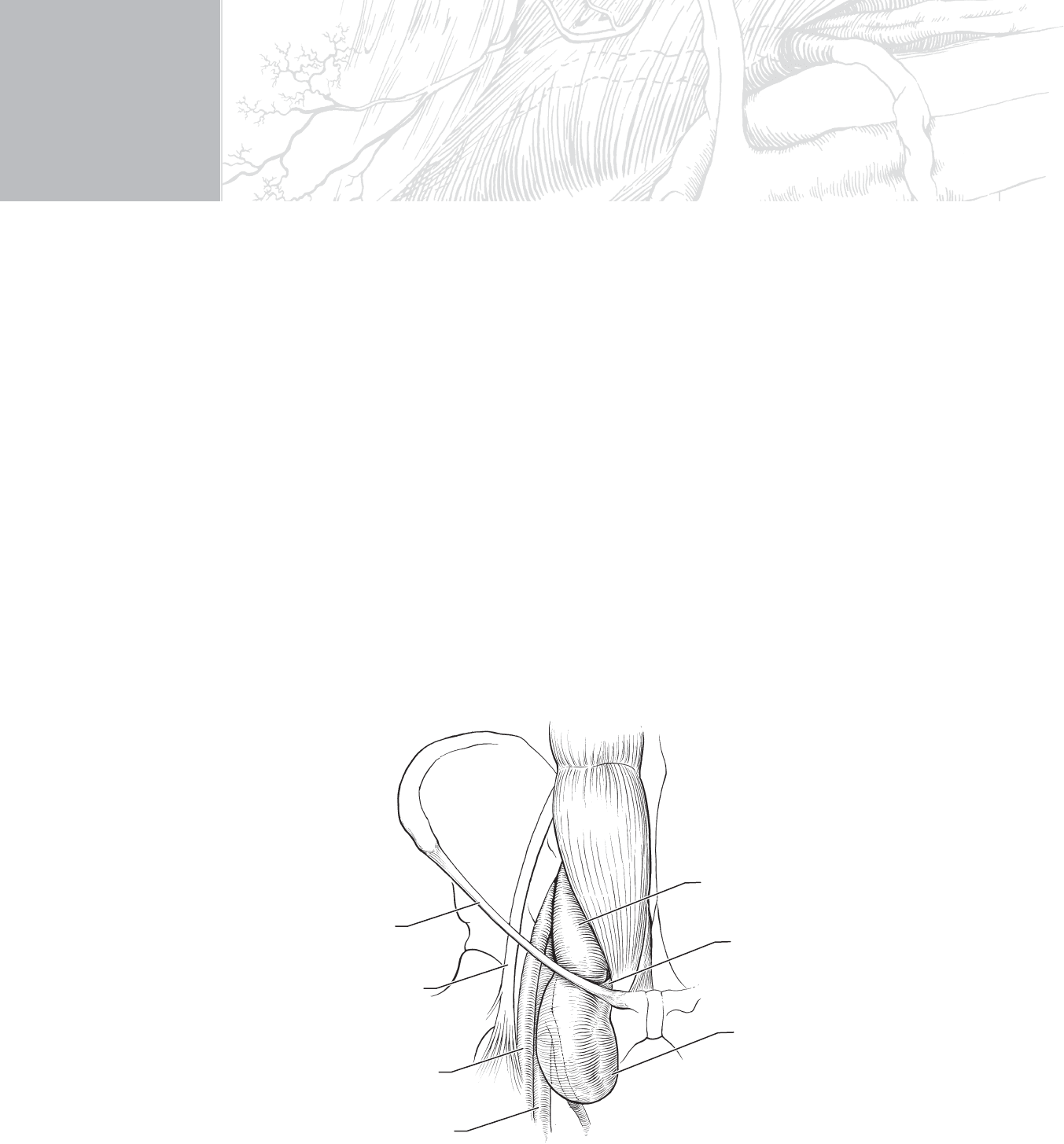
857
STEP 1: SURGICAL ANATOMY
◆ Figure 79-1 shows, in a stylized fashion, the structures that pass underneath the inguinal
ligament. Although large femoral hernias may extend laterally in the subcutaneous tissues
of the thigh, most should be located medial to the palpated pulse of the femoral artery.
CHAPTER
79
Femoral Hernia
Thomas D. Kimbrough
MC
Femoral vein
Femoral artery
Femoral nerve
Inguinal ligament
Small bowel
Lacunar ligament
Hernia sac
FIGURE 79–1

858 Section XI • Hernias
◆ The hernia is protruding through the femoral canal, which remains only a potential space in
most people. The space is bounded anteriorly by the inguinal ligament, posteriorly by the
pubic ramus and pectineal ligament, laterally by the femoral vein and sheath, and medially
by the lacunar portion of the inguinal ligament.
STEP 2: PREOPERATIVE CONSIDERATIONS
◆ The course of the inguinal ligament parallels a line drawn between the pubic tubercle and
the anterior superior iliac spine. Any mass that lies beneath this line and medial to the fem-
oral artery pulsation is a possible femoral hernia.
◆ As outlined later, some preoperative consideration regarding placement of the incision
should take place.
